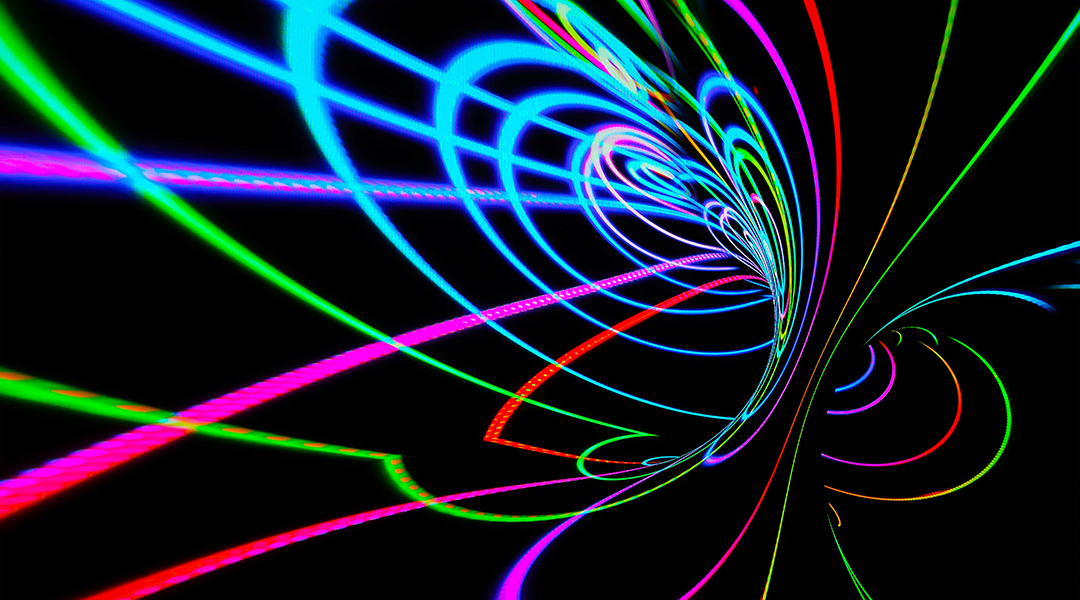On the scales of atoms and molecules, much of our everyday intuition does not apply, and quantum theories come into play.
When scientists work with small enough objects, quantum mechanics imposes some limitations, for example, that not all of a particle’s parameters can be measured simultaneously. The most famous example of this is called the Heisenberg Uncertainty Principle, which was first proposed in 1927 and states that it is impossible to simultaneously know both the position and velocity of a particle, such as an electron, because measuring one value inherently introduces uncertainty into the other.
“Quantum mechanics imposes fundamental limits on how accurate a measurement can be,” explained Lorcán Conlon of the Australian National University. “When measuring something with a ruler, you can’t measure more accurately than the smallest division on the ruler. But this is a limit imposed by your measuring device. In principle, you could use a ruler with smaller divisions. The limits imposed by quantum mechanics are different — they do not depend on your measurement choice, [but are set by nature].”
A series of recent theoretical studies has suggested that this is possible if measurements are made not on one physical system, but on entangled copies. According to these studies, the greater the number of entangled copies, the higher the measurement accuracy should be. This new theoretical limit on measurement accuracy, which refined the limits set by the Heisenberg Uncertainty Principle, has become known as the Nagaoka limit.
Entanglement and measurement
Entanglement is another mind-blowing property of quantum mechanics, which in essence stipulates that two or more interacting particles can retain information about each other, such as position or the direction of rotation, even when separated by large distances. What is even more impressive is that manipulating the state of one particle immediately changes the state of all its entangled partners.
To test the possibility of improving accuracy using entangled quantum systems, an international team of researchers has proposed and implemented a special experimental setup to demonstrate an accuracy which exceeded the value predicted by a variation of the Heisenberg relation.
“We used entanglement — one of the strangest features of quantum mechanics — to measure two quantum objects simultaneously,” said Syed Assad of the Australian National University and Nanyang Technological University, Singapore, who is one of the authors of the study. “This allowed us to make a measurement which was more accurate than any possible measurement when the two quantum objects are not entangled.”
The entangled quantum systems the team studied were qubits — building blocks of quantum computers, which can exist as an arbitrary combination of two states, “0” and “1”, unlike their well-known classical counterparts called bits, which can exist in only one of these two states at a time.
“Quantum computers offer unprecedented control over quantum states,” explained Assad. “With advancements in quantum computing it has become possible to create and entangle quantum states of a certain size. For our work, it was important to be able to generate two identical copies of the same quantum state, which is hard enough by itself, and then entangle both copies. Quantum computers are the only way to do this presently.”
This study allowed the authors to exceed the accuracy set by a variation of the Heisenberg principle, achieved not by simultaneously measuring the speed and position of entangled qubits, but by measuring some of their more abstract quantum properties.
The scientists tested their theory using 19 different quantum computers located around the globe, which are based on three different types of qubits: photonic, superconducting, and trapped ions. Some of the devices allowed the team to reach the Nagaoka limit in the case of a pair of entangled qubits, while they all failed in tests with three qubits. The researchers attributed these failures to the technological limitations of current quantum computers and believe that this problem can be overcome in the future.
“In principle, by entangling three copies of a quantum state and then measuring all three copies simultaneously, we should be able to achieve even better accuracy than by entangling and measuring two copies,” said Conlon. “However, when we tried this experiment, the quantum computers had too much noise to accurately measure three copies. Future quantum computers will be less noisy, and it is exciting to see if [they] can measure three or even four copies of a quantum state simultaneously.”
Shaking up the quantum world
Although the results of the study shake the very foundations of our understanding of atomic and subatomic physics by demonstrating that the Heisenberg principle can be violated in some circumstances, the researchers believe that improving the accuracy of quantum measurements could also have very important applications in technology and industry.
One of the most prominent of these is bio-sensing. Biosensors are already employed in numerous applications, such as disease monitoring, drug discovery, and detection of pollutants.
“When using light to illuminate an object, we can turn up the intensity of the light to improve the accuracy,” explained Assad. “However, in bio-sensing, we are often illuminating a tiny living organism. In this case, if the light is too bright, we can damage [it]. But quantum measurements offer a way around this. Using the same intensity of light, we can perform a better measurement to improve the accuracy.”
“[Our results] can also lead to advances in fundamental science,” he concluded. “For example, using quantum states in the search for gravitational waves has led to huge improvements in sensitivity.”
Reference: Lorcán O. Conlon et al., Approaching optimal entangling collective measurements on quantum computing platforms, Nature Physics (2023). DOI: 10.1038/s41567-022-01875-7
Feature image credit: FLY:D on Unsplash

















